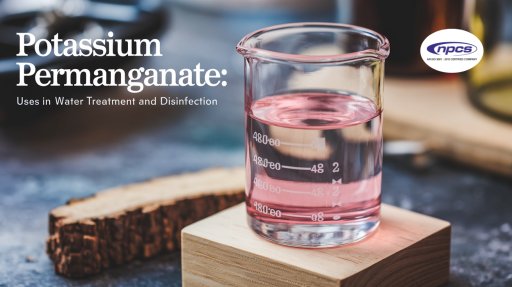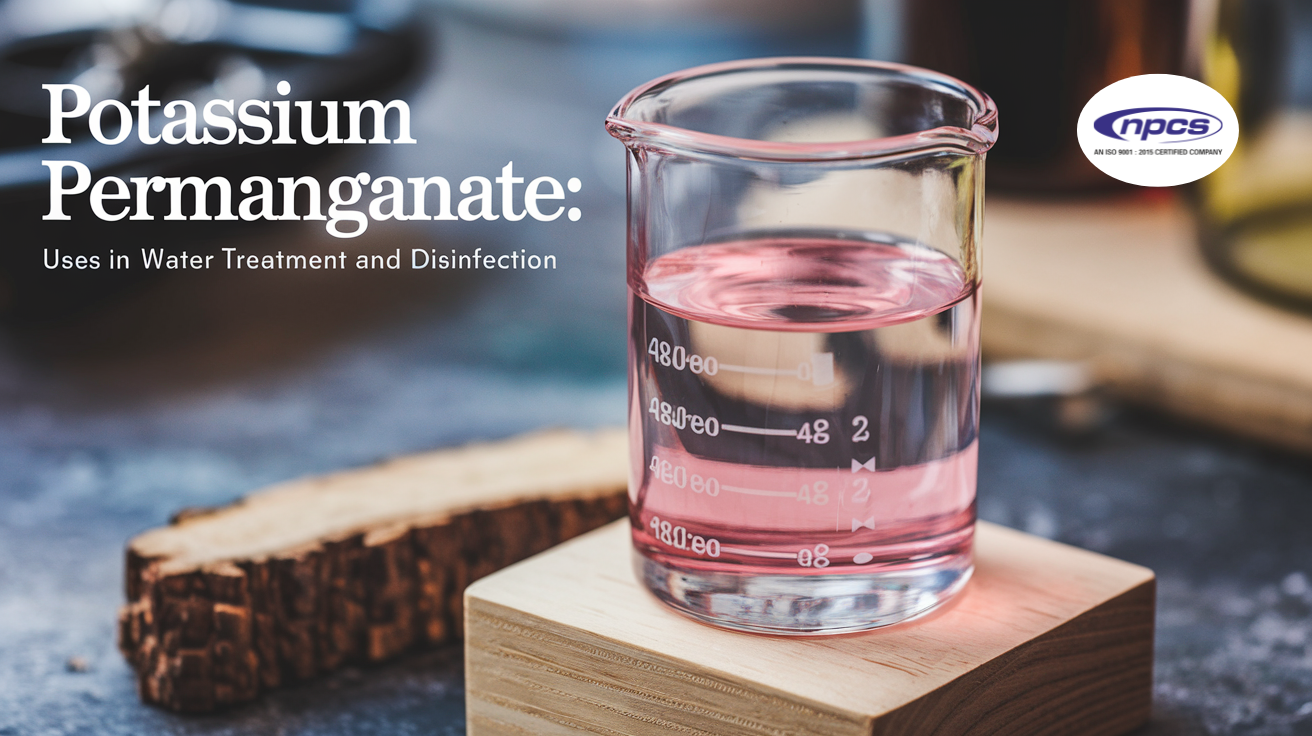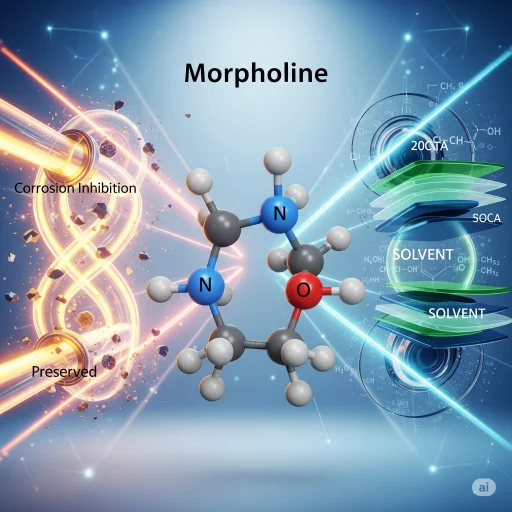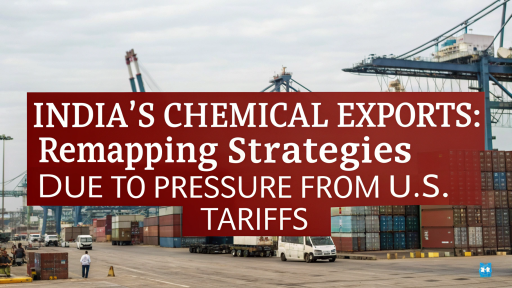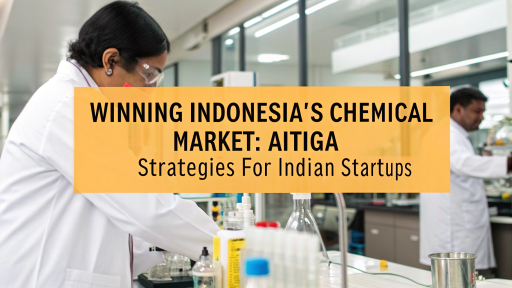Though not all fluids are self-purifying enough to be drunk or used in industrial operations, water is indeed one of the basics of life. Through bacteria, viruses, chemical compounds, or metals, water is polluted in several ways that render it unsafe for drinking or for human use. One of the most efficient appliques in water treatment and disinfection for both quality and safety, potassium permanganate (KMnO₄) has been considered a quite powerful oxidizing agent.
From a standpoint of guaranteeing safety and thereby increasing water quality, this paper addresses the uses, benefits, methods, and applications of potassium permanganate in water treatment.
Also Read: Potassium Permanganate Manufacturing Business
Potassium Permanganate: What is it?
thus One chemical compound including potassium, manganese, and oxygen is potassium permanganate. It shows itself as dark purple or black crystalline solids, and in water it dissolves to produce a purple or pink solution. Strong oxidizing substance potassium permanganate basically allows one to oxidize and break down dangerous components present in water. Consequently, it is applied in several water treatment processes, including water quality enhancement, disinfection, and pollutant removal.
Also Read: Starting a chemical business
In water treatment, how does potassium permanganate behave?
One oxidizer of several pollutants present in water is potassium permanganate. Dissolved, the manganese ion released interacts with contaminants like iron, manganese, hydrogen sulfides, and related organic compounds. The complete process oxidizes these pollutants to far less harmful compounds and far more easily removable by filtering or other means. Potassium permanganate is a good disinfectant as it destroys or inactivates dangerous microorganisms.
Principal Applications of Potassium Permanganate in Water Treatment
Elimination of Manganese and Iron
Usually polluted by dissolved iron and manganese, groundwater has an unpleasant taste and stains plumbing fixtures and produces deposits in pipes. These metals are oxidized by potassium permanganate into insoluble forms, from which filtration in water may readily remove them. Purified water tastes better and looks better as well.
Consumption of Hydrogen Sulfide
Common contaminant in well water, hydrogen sulfide smells like “rotten eggs” and is quite unpleasant. Highly oxidizing to hydrogen sulfide, potassium permanganate water treatment causes this to be transformed into odorless sulfur compounds. Regarding cleanliness and fulfilling the amenity purpose, this physical treatment significantly raises the quality of the water for your family and yourself.
Pathogen Disinfection and Removal from Agents
Water targeted for harmful bacteria, viruses, and other pathogens is further cleaned using potassium permanganate water treatment. Its very powerful oxidizing qualities guarantee also the inactivation of such bacteria, facilitating the water-to-drink process. This specific use is advantageous in municipal water treatment plants, where pre-treatment by potassium permanganate is frequently carried out prior to applying any further disinfection treatments by chlorination.
Eliminating Organic Agents
Potassium permanganate can further break down a very broad spectrum of organic pollutants, including herbicides, insecticides, several other forms of dissolved organic compounds, and organic solvents. In the oxidation of these chemicals by potassium permanganate, the substance itself clarifies fluids, removes poor taste and smell, and reduces the danger of their negative consequences on human health. Thus, for industrial or agricultural water treatment, it is rather efficient.
Also Read: Small Business Ideas in India
Wastewater Treatment using Potassium Permanganate
Wastewater achievable for a wide variety of contaminants, including organic compounds, metals, and volatiles, is treated with potassium permanganate water treatment. The chemical makes considerable progress in addressing textile waste as well as effluents from sectors including mathematics and pharmacologists. Harmful materials are broken down by potassium permanganate into less dangerous or benign ones. The final effect is that the effluents may be disposed of ecologically responsibly into the surroundings.
Reverse Osmosis Systems: Pretreatment
One often used technique for water filtration is reverse osmosis, or RO. Some contaminants, like iron, chlorine, and organic matter, however, damage or lower the efficiency of RO membranes. Thus, potassium permanganate water treatment is generally utilized as a pretreatment to oxidize these contaminants before introducing them into the RO system, thereby guaranteeing the operational efficiency and lifetime of RO membranes.
Water Treatment Benefits with Potassium Permanganate
Low Cost
There is cheap potassium permanganate water treatment chemical available. Treating several kinds of pollutants, it is a flexible and effective chemical for towns or businesses as well as for big-scale water treatment plants. Many times, potassium permanganate is less expensive than alternative treatment methods, which include costly compounds or sophisticated filtering systems.
Environment Conscious
A green substitute for water treatment is potassium permanganate. It dissolves into potassium ions and manganese oxide, both of which are non-toxic and do not endanger the environment over long terms. When treated water is released, the breakdown products neither endanger aquatic life nor the adjacent ecology.
Reduced Efficiency in Concentration
Low concentrations of potassium permanganate have great reactivity; hence, only small amounts of chemical should be used to treat a lot of water. Unlike other chemicals, which may need big quantities to reach the treatment goal, this appears to be a far more ecologically friendly and advantageous approach to treating water.
multifarious
One flexible chemical used in water treatment is potassium permanganate. It handles several toxins, including organic compounds, hydrogen sulfide, metals like iron and manganese, and infections. Such adaptability makes it an important chemical for municipal or industrial uses, including water treatment.
Related Project Report: POTASSIUM Permanente
Things to Think About and Safety Measures
Potassium permanganate should be used carefully, even if it is efficient and ecologically beneficial. It is an aggressive oxidant; hence, it would damage eyes and skin. One should handle potassium permanganate using gloves and eyewear. Moreover, too high concentrations might cause the water to become purple, which would be unacceptable for several uses. To ensure the therapy efficacy and avoid any undesired discoloration, the dosage has to be suitable.
In essence,
Strong and adaptable for water treatment and disinfection is potassium permanganate. Potassium permanganate is essential in restoring excellent water quality as it can eliminate from water a range of pollutants, including metals, hydrogen sulfide, organics, and pathogens. Treating industrial wastewater or drinking water assures safe consumption. NIIR offers everybody in the water treatment sector advice and advising services. Please contact us if you would like professional guidance on potassium permanganate applications.

